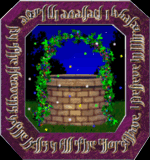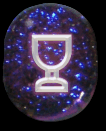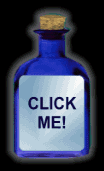Peppermint
The Roman housewives made a paste of the Peppermint with honey, which they esteemed highly, partaking of it to sweeten their breath, and to conceal their passion for wine at a time when the law punished with death every woman convicted of quaffing the ruby seductive liquor
Added Oct 28, 2010
| 6,709 Reads
The Peppermint (Mentha piperita), or "Brandy Mint," so called because having a pungent smell, and taste of a peppery (piper) nature, is a labiate plant, found not uncommonly in moist places throughout Britain, and occurring of several varieties. Both it and the Spearmint probably escaped from cultivation at first, and then became our wild plants. Its leaves and stems exhale a powerful, refreshing, characteristic aroma, and give a taste which, whilst delicate at first, is quickly followed by a sense of numbness and coldness, increased by inspiring strongly. Preparations of Peppermint, when swallowed, diffuse warmth in the stomach and mouth, acting as a stimulating carminative, with some amount of anodyne power to allay the pain of colic, flatulence, spasm, or indigestion. This is through the powerful volatile oil, of which the herb yields one per cent. Its bruised fresh leaves, if applied, will relieve local pains and headache. A hot infusion, taken as tea, soothes stomach ache, allays sickness, and stays colicky diarrhoea. This will also subdue menstrual colic in the female. The essential oil owes its virtues to the menthol, or mint camphor, which it contains. The Peppermint is largely grown at Mitcham, and is distilled on the ground at a low temperature, the water which comes away with the oil not being re-distilled, but allowed for the most part to run off. Chinese oil of Peppermint (Po Ho Yo) yields menthol in a solid crystalline form, which, when rubbed over the surface of a painful neuralgic part, will afford speedy and marked relief, as also for neuralgic tooth-ache, tic douloureux, and the like grievous troubles. It is sold in diminutive bottles and cases labelled with Chinese characters. An ethereal tincture of menthol is made officinally with one part of menthol to eight parts of pure ether. If some of this is inhaled by vaporisation from a mouthpiece inhaler, or is sprayed into the nostrils and hindermost throat, it will relieve acute affections thereof, and of the nose, by making the blood vessels contract, and by arresting the flow of mucous discharge, [340] thus diminishing the congestion, and quieting the pain. This camphoraceous oil was formerly applied by the Romans to the temples for the cure of headache. In local rheumatic affections the skin may be painted beneficially with oil of Peppermint. For internal use, from one to three drops of the oil may be given as a dose on sugar, or in a spoonful of milk; but the diluted essence, made from some of the oil admixed with spirit of wine, is to be preferred. Put on cotton wool into the hollow of a carious tooth, a drop or two of the essential oil will often ease the pain speedily. The fresh plant, bruised, and applied against the pit of the stomach over the navel, will allay sickness, and is useful to stay the diarrhoeic purging of young children. From half to one teaspoonful of the spirituous essence of Peppermint may be given for a dose with two tablespoonfuls of hot water; or, if Peppermint water be chosen, the dose of this should be from half to one wineglassful. Distilled Peppermint water should be preferred to that prepared by adding the essence to common water. Lozenges made of the oil, or the essence, are admirable for affording ease in colic, flatulence, and nausea. They will also prevent or relieve sea-sickness. When Tom Hood lay a dying he turned his eyes feebly towards the window on hearing it rattle in the night, whereupon his wife, who was watching him, said softly. "It's only the wind, dear"; to which he replied, with a sense of humour indomitable to the last, "Then put a Peppermint lozenge on the sill." Two sorts of this herb are cultivated for the market—black and white Peppermint, the first of which furnishes the most, but not the best oil. The former has purple stems, and the latter green. As an antiseptic, and destroyer of disease germs, this oil is signally efficacious, on which important account it is now used for inhalation by consumptive patients as a volatile vapour to reach remote diseased parts of the lung passages, and to heal by destroying the morbid germs which are keeping up mischief therein. Towards proving this preservative power exercised by the oil of Peppermint, pieces of meat, and of fat, wrapped in several layers of gauze medicated with the oil have been kept for seven months sweet, and free from putrescent changes. A simple respirator for inhaling the oil is made from a piece of thin perforated zinc plate adapted to the shape of the mouth and nostrils like a small open funnel, within the narrow end of which is fitted a pledget of cotton wool saturated with twenty drops of the oil, or from twenty to thirty drops of the spirituous essence. This should be renewed each night and morning, whilst the apparatus is to be worn nearly all day. At the same time the oil is agreeable of odour, and is altogether harmless. It may be serviceably admixed with liniments for use to rheumatic parts. "Peppermint," says Dr. Hughes (Brighton), "should be more largely employed than it is in coughs, especially in a dry cough, however caused, when it seems to act specifically as a cure, just as arnica does for injuries, or aconite for febrile inflammation. It will relieve even the irritative hectic cough of consumptive patients. Eight or ten drops of the essence should be given for this purpose as a dose with a tablespoonful of water. In France continuous inhalations of Peppermint oil combined with creasote and glycerine, have become used most successfully, even when cavities exist in the lungs, with copious bacillary expectoration. The cough, the night sweats, and the heavy phlegm have been arrested, whilst the nutrition and the weight have steadily increased." A solution of menthol one grain, spirit of wine fifty drops, and oil of cloves ten drops, if painted over the seat of pain, will relieve neuralgia of the face, or sciatica promptly. Unhealthy sores may be cleansed, and their healing promoted, by being dressed with strips of soft rag dipped in sweet oil, to each ounce of which one or two drops of the oil of Peppermint has been added. For diphtheria, Peppermint oil has been of marked use when applied freely twice or three times in the day to the ulcerated parts of the throat. This oil, or the essence, can be used of any strength, in any quantity, without the least harm to the patient. It checks suppuration when applied to a sore or wound, whilst exercising an independent antiseptic influence. "Altogether," says Dr. Braddon, "the oil of Peppermint forms the best, safest, and most agreeable of known antiseptics." Pliny tells that the Greeks and Romans crowned themselves with the Peppermint at their feasts, and adorned their al fresco tables with its sprays. The "chefs" introduced this herb into all their sauces, and scented their wines with its essence. The Roman housewives made a paste of the Peppermint with honey, which they esteemed highly, partaking of it to sweeten their breath, and to conceal their passion for wine at a time when the law punished with death every woman convicted of quaffing the ruby seductive liquor. Seneca perished in a bath scented with woolly mint.
Peppermint Aromatherapy Essential Oil: The River
Added Oct 28, 2010
| 6,709 Reads
Share The Magic ...
The GoE MONEY!!! Course - A Course In Real MONEY MAGIC!
|





















